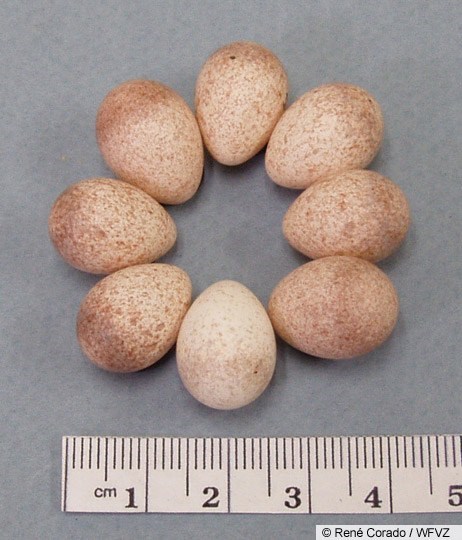Table Of Content

A "brown-throated" subspecies of the House Wren occurs in mountains of extreme southeastern Arizona. It has a distinct buffy eyebrow and cinnamon-buff throat and chest. House Wrens occur all the way through the Americas to southern Argentina. Individuals in the Caribbean and South America tend to be warmer colored and have somewhat different voices. Dark barring on the wings and tail contrast with the more uniform brown plumage elsewhere. Forages fairly low in tree branches and shrubs, eating mainly insects and spiders.
Breeding range
It appears that this isolated population has disappeared. Small patches of cacti remain in this area, but recolonization seems unlikely, because Cactus Wrens require large, intact stands of cacti. Plumage color varies regionally from rusty in more humid regions to gray in desert regions. Birds from San Francisco Bay south to Monterey, California, have less rusty coloring than birds farther north. Canyon Wrens are at home in places without water because these birds don’t need to drink! Even when they are near a water source, they are not seen drinking.
Compare with Similar Species
After pairing, the female selects the nest site and starts filling the nest with more twigs. The upper parts are unstreaked and grayish brown, the underparts are grayish-white. Notice the faint or missing eye stripe that iscommon in other wrens. Unlike many other birds, House Wrens do not have brightly colored feathers or markings.
How to Attract Wrens to Your Backyard
After the male finds a mate, the female takes over building duties and finishes the nest. Nests typically feature hundreds of small sticks (around 300 to 500 or so in some studies). When House wrens breed further north, they begin selecting nesting sites as soon as they return from migration in late winter or early spring.

Attracting them to your yard can be as easy as adding a birdhouse. House wrens don’t typically nest on the ground but do nest very close to the ground or inside items resting on the ground. Males don’t incubate, but they do remain attentive to the female and the nest during the incubation period.
Bewick's Wren (U.S - National Park Service
Bewick's Wren (U.S.
Posted: Fri, 21 May 2021 07:00:00 GMT [source]
Conservation
House Wrens aren’t too particular about where they build their nests. They prefer cavities in trees for ultimate protection from predators but love man-made nesting boxes even better than naturally occurring cavities. Let’s dive into what the Wren mating season looks like and how they raise their young as the season progresses.
How Long Does it Take for House Wren Eggs to Hatch?
They may build a completely new nest in the same spot each season, or they may simply move on to a new nesting spot. Some birds will reuse their existing nests year after year, while others build a new nest every season. Wren eggs are no different from other types of birds in this regard.
After nesting season, most U.S. and Canadian House Wren populations migrate to the southern United States and Mexico for the winter. The female will lay one egg daily and often leaves the nest to find food before laying another egg the following morning. If you find a wren nest unoccupied with a few eggs, it doesn’t mean that it’s abandoned. It simply means that the female isn’t done laying her brood. At the start of the breeding season, the male House wren seeks out eligible nesting cavities and begins preparing them for nesting. First, he lines the nests with sticks, sometimes comprehensively with hundreds of sticks, other times with just a handful of sticks.
Why are they called House Wrens?
Nesting boxes suitable for House wrens can have a base as small as 4 x 5in. Artificial nesting sites range from cavities in rotting or decaying structures to novel choices like coat pockets, tin cans, ornaments, abandoned vehicles, and machinery. In addition, nests have been found in boots, shoes, and a multitude of other small artificial cavities. Egg-laying begins soon after the female finishes lining the nest cup. Once the female starts laying eggs, she lays one egg every day in the early morning hours. The breeding grounds encompass roughly the upper two-thirds of North America, which is not far from the wintering grounds in Southern U.S. and Mexico.
Measuring 5 inches long with a plump body and ashort tail. Even if no birdhouse is offered, these birds are likely to find somewhere or something to nest in around your home. House wrens rarely abandon their nests and will only risk doing so if the nest is under indefensible threat or otherwise fails, e.g., due to insect infestation or flooding. Parents make a combined 20 to 30 trips to and from the nest each hour. The female House Wren might make 200 to 300 trips back and forth from the nest in this time in a process that can take as long as 14 days.
But before long, Sherman’s admiration for the wrens began to sour. First she saw one invade a Phoebe nest and toss out two eggs—an “evil deed,” she wrote in her journal. A plain brown bird with an effervescent voice, the House Wren is a common backyard bird over nearly the entire Western Hemisphere. Listen for its rush-and-jumble song and you’ll find this species zipping through shrubs and low tree branches, snatching at insects. House Wrens will gladly use nestboxes, or you may find their twig-filled nests in old cans, boots, or boxes, to mention a few.

No comments:
Post a Comment